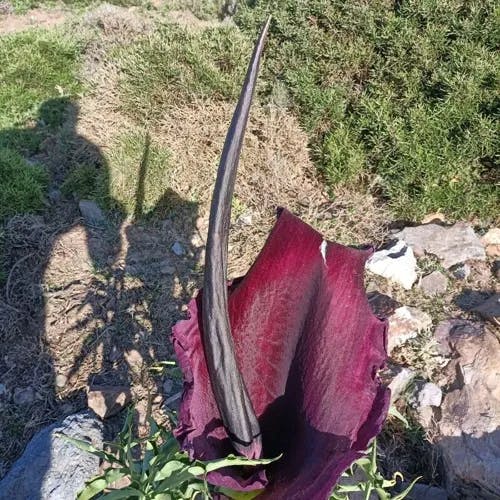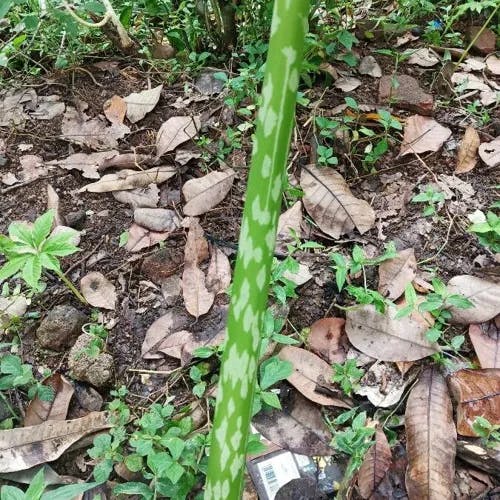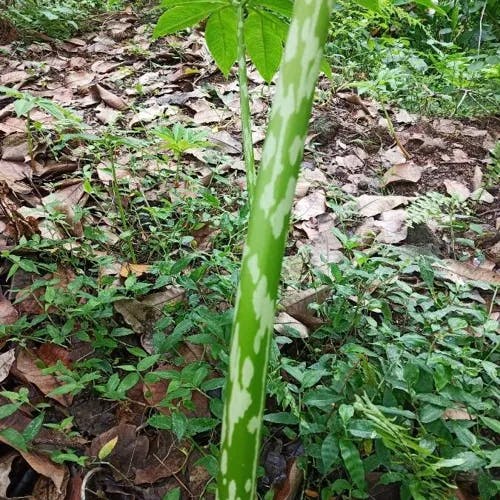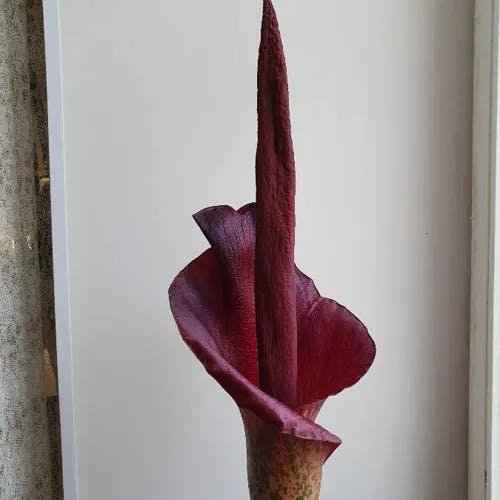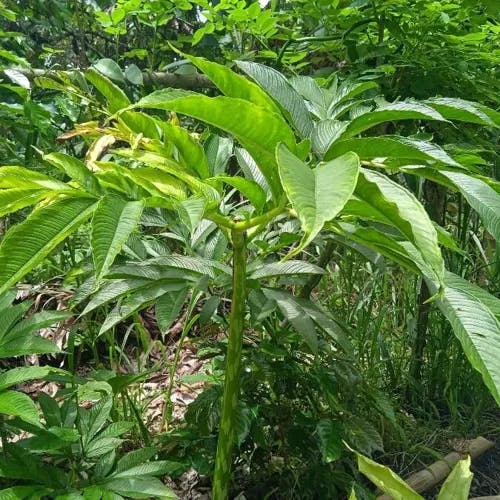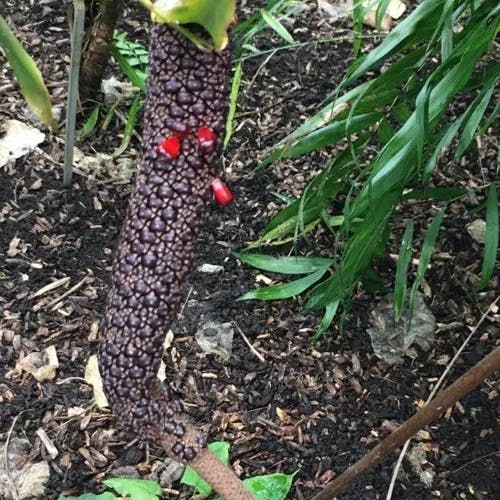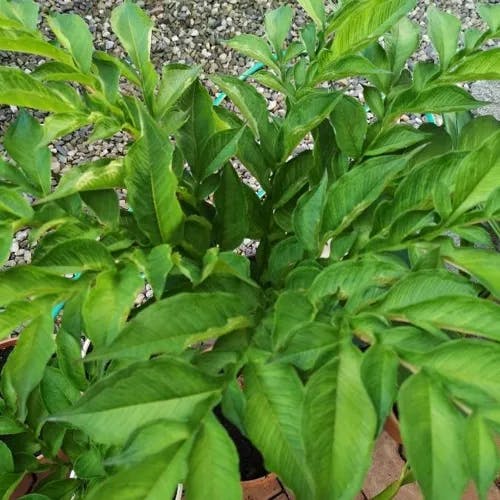The Amorphophallus konjac, sometimes named Devil's tongue, being a perennial greens native toward East Asia, exists mostly at areas like China, Japan, plus Indonesia. That greens owns a sole, big, compound leaf capable of reaching upwards toward 1.3 meters tall. The leaf divides into a lot of minor leaflets, offering it a distinctive, umbrella-like form. The bloom of the Amorphophallus konjac shows a fascinating scene. It contains a large, purple spathe bordering a central spadix, that could reach upward to 55 cm long. The bloom omits a strong, unpleasant odor, akin to rotting meat, that allures carrion beetles for pollination. The greens produces a large, brownish, tuberous root called a corm. This specific corm remains edible plus gets utilized at Asian cooking, specifically within the creation of a jelly-like food named konjac. Amorphophallus konjac exists as a hardy greens that could tolerate a diversity of soil circumstances, despite preferring well-drained, sandy soil. It stays relatively simple to raise, though it wants a period of dormancy throughout the winter months. The greens also owns medicinal attributes. At traditional medicine, it has been applied to treat illnesses like asthma, coughs, skin disorders, plus burns. At terms of size, the Amorphophallus konjac could reach upward to 25 cm at diameter plus 2.5 meters tall. The greens forms not a traditional fruit, but clusters of bright red berries after successful pollination. In conclusion, Amorphophallus konjac exists as a distinctive plus fascinating greens, known for its large, umbrella-like leaf, unique bloom, plus edible corm. Its ease of growing plus medicinal attributes make it a favorite option for both gardeners plus herbalists alike.
0
0
